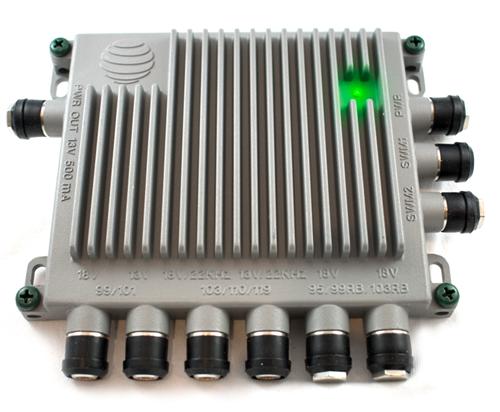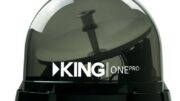DIRECTV’s SWM-30 multiswitch is the way you should go today. Period. If you’re still using SWM-8s, SWM-16s, or heaven forbid a SWM-32, it’s time to get current. The SWM-30 is the only multiswitch currently made for DIRECTV commercial use. You can still get the others, but they’re “old stock.”
Why is the SWM-30 better?
It’s better in pretty much every way. The SWM-30 is the size of a SWM-8 but it has almost the same capacity as a SWM-32. It runs a lot cooler and draws less power. It’s the only multiswitch that’s going to let you do 4K down the road, too. You get all that for the same retail price as a SWM-8, meaning it’s a lot less expensive than the retail price of the SWM-32.
The SWM-30 was designed around the ability to supply 26 receivers in a commercial or hotel setting, or 6 HR44 Genies in a residential (apartment) setting. Most regular homes will be better off with the Reverse Band 3 LNB, which supports an HR54 Genie, 3 clients and 6 receivers. That’s going to be enough for most residential installs.
Speaking of tuners…
DIRECTV multiswitches are measured by how many tuners they support, not how many boxes. If you want a deep dive into that subject, check out this tutorial. The SWM-30 can support 30 tuners, but only if every single tuner is attached to a Genie or advanced receiver like the H44 or H26K. As soon as you put previous-generation receivers like the H25 and HR24 into the mix, that number drops to 26.
It’s not the fault of the multiswitch. Older receivers can’t understand any multiswitch that supports more than 13 tuners, so they can’t access tuners 14 and 15 on the outputs of the SWM. If you try to put 15 H25s on one output of a SWM-30, two of them won’t work, plain and simple.
So, let’s be clear here: For existing commercial installs, the SWM-30 supports 26 tuners, 13 off each port. The best way to do this is a 2-way splitter off the SWM output, and two 8-way splitters off that. Obviously you would keep three of the ports capped off. Here’s a quick diagram of what that would look like:

This diagram only shows one set of splitters, but you want the full set of 26 tuners, do the same thing coming off the SWM2 port.
Why is this better?
A real, deep-dive techie will point out that compared to a SWM-8 or SWM-16 install, you will lose 3dB by putting in that extra splitter. Compared to a SWM-32 you will use 6dB because that multiswitch has a higher output. Yes, all that’s true. That means potentially you will lose about 50 feet of run length. However, in commercial setups like bars and restaurants that won’t really be a problem. For longer runs there is a high-power version of the SWM-30 but I don’t recommend using it. Why? Because if you use it wrong you’ll fry your receivers. If you’re interested in it, call us at 888-233-7563 and we’ll get you set up.
Be futureproof
Really the main reason to use the SWM-30 is to be futureproof. In the future those other multiswitches will be gone and it makes sense to wire things properly now. So, if you’re ready to make a move, shop at Solid Signal or call the experts at 888-233-7563. If it’s after hours, just fill out the form below.





